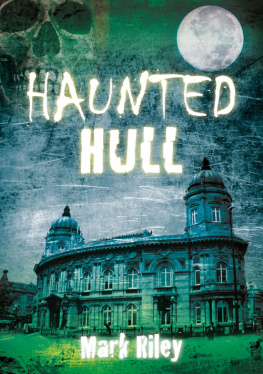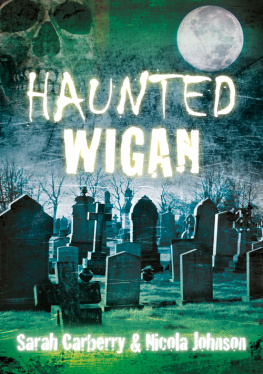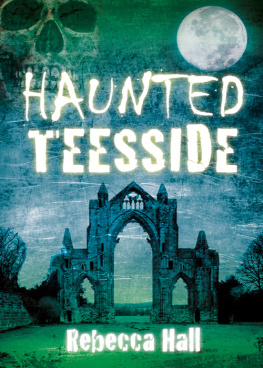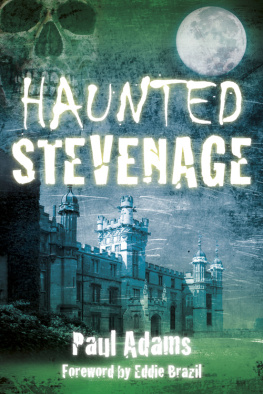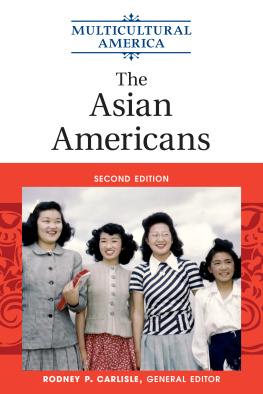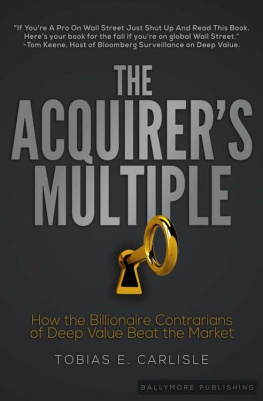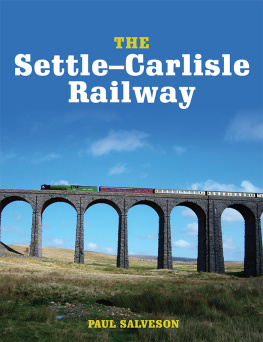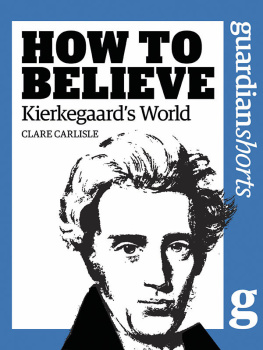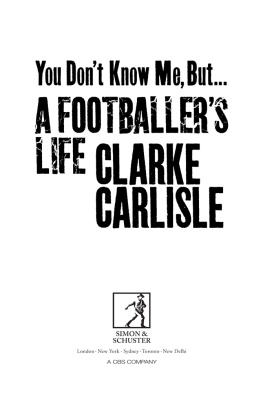

Carlisle Cathedral.
To the good folk of Carlisle.
CONTENTS
one
two

F IRSTLY, I would like to thank paranormal historian, Paul Adams co-author of The Borley Rectory Companion , and renowned expert on the life and times of the great psychical researcher Harry Price (1881-1948) for penning the foreword to this book. I would also like to thank the good people of Carlisle for being so warm, friendly and, most of all, keen to share their stories for this book on the ghosts of Carlisle. Thanks to Carlisle resident, David Harkins, for sharing his ghost stories with me and for the use of two images produced herein. Thanks must also go to the Cumberland News , namely Sue Crawford and Meg Jorsh, for publishing a story about the writing of this very book. Massive thanks must go to my good friend Mike Hallowell, for his usual on-going support and assistance during the compilation of this book. To my trusty North East Ghost Research Team member and old psychic pal Suzanne Hitchinson, for pointing me in the direction of some fascinating tales of ghosts. To Jan Mayer, owner of the Dalston Hall Hotel, for sharing his amazing stories with me; your co-operation was most welcomed and your kindness most appreciated. Thanks to Maggie McClellan and the staff from the Crown and Mitre Hotel, for their hospitality and their kindness during my visits there.
My thanks go to Dr Simon Sherwood of Northampton University, for his advice and information regarding the black dog. Thanks must also go to Syd Whitehead (Hon. Secretary of the Marie Stuart Society), for his advice regarding the Queen of Scotlands sojourns during her captivity at Carlisle Castle. Thanks to Stuart Davison and Sue Howarth from Carlisle railway station for their help and support during the compilation of this book; thanks too for allowing me to spend many nights at the station, in search of its ghosts. My thanks go to Dougie Kerr and Dave Maclachlan from the Carlisle Laser Quest, for their testimonies and assistance during my research for this book, and Mark of the Brickyard music venue, Sam Kane and James Heasley for telling me their accounts of the strange happenings therein. I offer my thanks to Julie Olley and Drew Bartley, who kindly produced illustrations for inclusion in this book. Finally, thanks to everyone else that I have spoken to and helped me along the way you know who you are.
D O you believe in ghosts? is a familiar and frequently asked question. The author of this book, Darren W. Ritson, does, and he has spent many years of study, research and practical investigation in order to provide the proof to support his convictions. It must be said that the serious investigation of the paranormal is an undertaking not to be given superficial attention, demanding as it does a commitment to the examination and understanding of a strange, unpredictable and mysterious subject. It is, however, a subject for which convincing evidence exists, for a wide range of curious and intriguing phenomena stretching back over hundreds of years has been reported and recorded by human communities and civilisations across the entire world; it includes the appearance of apparitions, the existence of haunted houses and buildings, poltergeist infestations, the psychic dimension of mediumship and channelling, as well as prophetic dreams and time-slips. The interaction between the world of the unseen and that of mankind has created world religions, defies currently accepted scientific thinking, and continues to provoke and fascinate; and a major factor in this continued interest in the supernatural realm is the world of ghosts and haunted places.
The task of the objective ghost hunter involves a number of disparate and time-consuming activities. As well as historical research, interviewing witnesses to paranormal phenomena, assessing the validity of the claimants experiences, and visiting allegedly haunted locations, for many researchers and Darren in particular carrying out investigative vigils and the employment of technical equipment in obtaining evidence of ghostly activity, is of paramount importance. In Haunted Carlisle , paranormalist Darren continues his survey of supernormal phenomena, mainly in the North of England, which to date has taken place in his home town of Newcastle-upon-Tyne, together with neighbouring Durham city, Berwick-upon-Tweed, along with the counties of Tyneside, Wearside, County Durham and Northumberland, as well as many other places across the UK. This has involved a combination of desktop study, practical investigation and personal experiences a successful combination that has, again, produced another comprehensive and entertaining volume of ghostly activity.

The road sign welcoming people to Carlisle.
At some point in the future, perhaps a lifetime away, maybe more, mankind will have the answers to the elusive reality of the paranormal world that is seemingly all around us. Since what could be described as the occult revolution in twentieth century Britain, which has steadily gathered momentum from its initial beginnings in the 1960s, the growing public interest and acceptance of ghostly phenomena has resulted in an increased and detailed chronicling of Britains strange and haunted places, and the present volume admirably continues this tradition. Carlisle and its neighbouring regions are known for several high-profile supernatural cases, most notably the Radiant Boy phantom of Corby Castle. The city itself boasts a number of paranormal sites the cathedral, the castle, the railway station and several public houses, are all haunted places and the author has visited them personally, along with many others, to compile the records of strange, thought-provoking and eerie happenings which, through these pages, you will soon be encountering for yourself.
So, join your guide, Darren W. Ritson, for a ghostly tour of haunted Carlisle to be enjoyed with the lights low, if you dare
Paul Adams
Bedfordshire, 2012
A FTER penning a number of books, including Haunted Newcastle , Haunted Durham , Haunted Berwick , Haunted Tyneside and Haunted Northumberland , I decided that it was time to make the journey across the top of northern England and explore the haunted heritage of Carlisle, in the North West. Carlisle is a very historical place indeed, with its own abundance of social, architectural and cultural enigmas. It also has customs, traditions and many wonderful visual reminders of yesteryear in almost every place you choose to look. These are some of the main reasons why I was drawn here; to investigate its fascinating, and in a way exceptional, history, whether it is paranormal, or not. Of course, it goes without saying that the paranormal aspect of my research is what this book is largely composed of.
The Romans settled here over 2,000 years ago, with their base being established to serve the forts along Hadrians Wall. Known as Luguvalium , Carlisle is situated only ten miles from the Scottish border. Because of its close proximity to Scotland, during the Middle Ages it became an important military stronghold. Carlisle is the largest settlement in the county of Cumbria, and much like Berwick-upon-Tweed, it has been fought over many times and has belonged to both the English and Scottish empires. This was of course before these two countries became part of the United Kingdom. Interestingly, Carlisle does not appear in the Domesday Book, simply because at that particular time in history, when the book was created, Carlisle was in the hands of the Scots.
Next page

